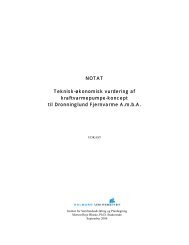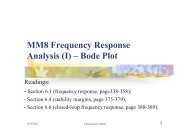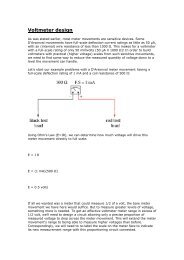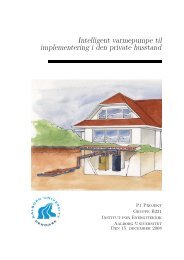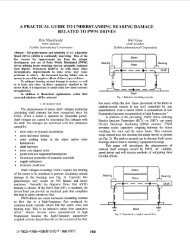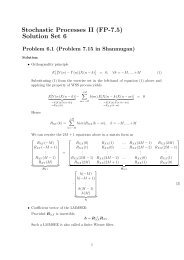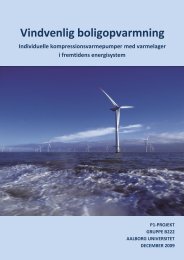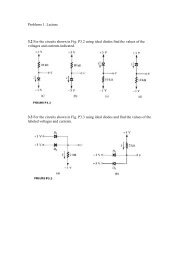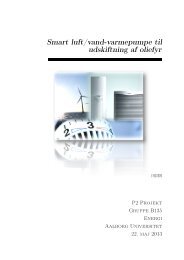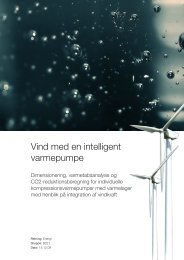Chapter 13 Gas Turbine Power Plants
Chapter 13 Gas Turbine Power Plants
Chapter 13 Gas Turbine Power Plants
You also want an ePaper? Increase the reach of your titles
YUMPU automatically turns print PDFs into web optimized ePapers that Google loves.
Q A =C p (T 03 -T 02 .) (<strong>13</strong>.14)<br />
where T 02 - is calculated from (<strong>13</strong>.10), i.e.,<br />
(<strong>13</strong>.15)<br />
Finally, the cycle thermal efficiency T] can be calculated by<br />
substituting the above equations into the equation,<br />
W -W<br />
^ = ^-^- (<strong>13</strong>.16)<br />
where the numerator has been expressed as a difference, since W c<br />
represents the magnitude of the compressor work.<br />
The graphs of Figure <strong>13</strong>.3 were determined by using the<br />
methods outlined above. The variation of cycle thermal efficiency<br />
with cycle pressure ratio at constant turbine inlet temperature is<br />
shown for the air standard Brayton cycle with y = 1 .4. It is noted<br />
that the optimum cycle pressure ratio is a function of turbine inlet<br />
temperature. For T 03 =1000°K the optimum r p is around 7 or 8,<br />
but for T 03 = <strong>13</strong>00°K the optimum r p is much higher. Cycle efficiency<br />
depends on turbine inlet temperature and cycle pressure<br />
ratio; furthermore, there is an optimum pressure ratio for every<br />
turbine inlet temperature.<br />
<strong>13</strong>.4 Brayton Cycle with Regeneration<br />
Efficiency as a function of cycle pressure ratio for a cold airstandard<br />
Brayton cycle having T 03 = <strong>13</strong>00°K was considered in



